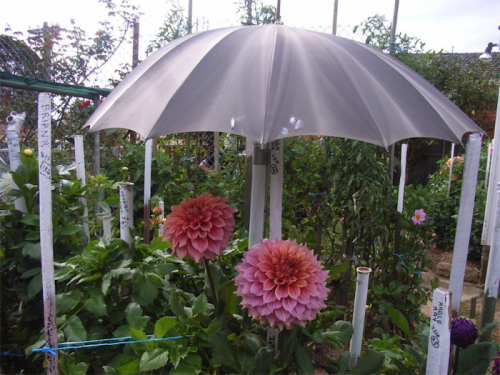WE approach autumn with the hope of cooler weather for ourselves and our plants!

As the blooms of summer fade (or are burnt to a cinder with the heat), the autumn colours come into their own.
With cooler weather, autumn blooms will last longer and are equal to the range of colours of spring and summer.
The flowering time of plants is definitely earlier, not only here but very noticeably in my relations’ gardens in the UK. This warming pattern is evident with the increasing number of vineyards being established in the south of England. Although it is a well-known fact that in Roman times the weather was equally warm enough for grape production.
Here, Lagerstroemia indica or crepe myrtle traditionally flowered in autumn, but they are now flowering in January with a floriferous display continuing well into February. Years ago, the bane of crepe myrtle was mildew on the leaves. With modern breeding, especially by Fleming’s Nurseries in Victoria, this problem has been overcome.
This is good news for those who are moving away from chemical sprays in the garden. Many old-fashioned methods of dealing with pests and diseases still are very effective. To combat mildew on any plant, whether it’s pumpkins or crepe myrtle, mix one part full cream milk (no lite milk) with eight parts water. Spray on top and under the leaves and repeat in about 10 days.

SOME people complain that the autumn-flowering Anemone hupehensis or Japanese windflowers take over the garden and should be classified as a weed. But this can happen with many other favourite perennial plants, even thyme if you let it go.
Asters or Michaelmas daisies can quickly spread from a small 15cm pot-size plant to a metre across in a couple of years.
And yet, all these are easily kept under control by digging up the surplus for friends or potting them up for church fetes.
The Japanese windflowers come in white or pink flowers. Growing to about 50cm tall, they are ideal for the back of the flower bed. The buds on ours are rapidly filling out now for a long autumn display with Asters or Michaelmas daisies planted in front.
SUMMER-flowering plants such as Alstroemeria, which have been providing a stunning display for months, have been suffering with the extreme heat. I have cut mine back to ground level now and with regular watering and liquid fertiliser such as Neutrog Seamungus, a combination of seaweed and chook poo, in a few weeks they will provide a second flowering right into early winter.

THE Great Autumn Flower Show, one of the highlights of the Canberra Horticultural Society’s calendar, will be held at Lancaster Hall, Wesley Church Centre, National Circuit, Forrest, from noon (after judging) to 5pm on Saturday, March 4 and 11.30am-3.45pm, Sunday, March 5. The highlight will be the magnificent display of dahlias plus general flowers, floral art, fruit and veggies. Entry by donation and more details at hsoc.org.au
Jottings…
• Trim lavender and rosemary at the base of the flower stalks, but not into the old wood.
• With dahlias and chrysanthemums lightly trim to encourage more shoots and hence more flowers. Do this without delay.
• If hydrangeas are showing mildew refer to notes above, but do not put affected leaves on the compost heap.
Who can be trusted?
In a world of spin and confusion, there’s never been a more important time to support independent journalism in Canberra.
If you trust our work online and want to enforce the power of independent voices, I invite you to make a small contribution.
Every dollar of support is invested back into our journalism to help keep citynews.com.au strong and free.
Thank you,
Ian Meikle, editor




Leave a Reply